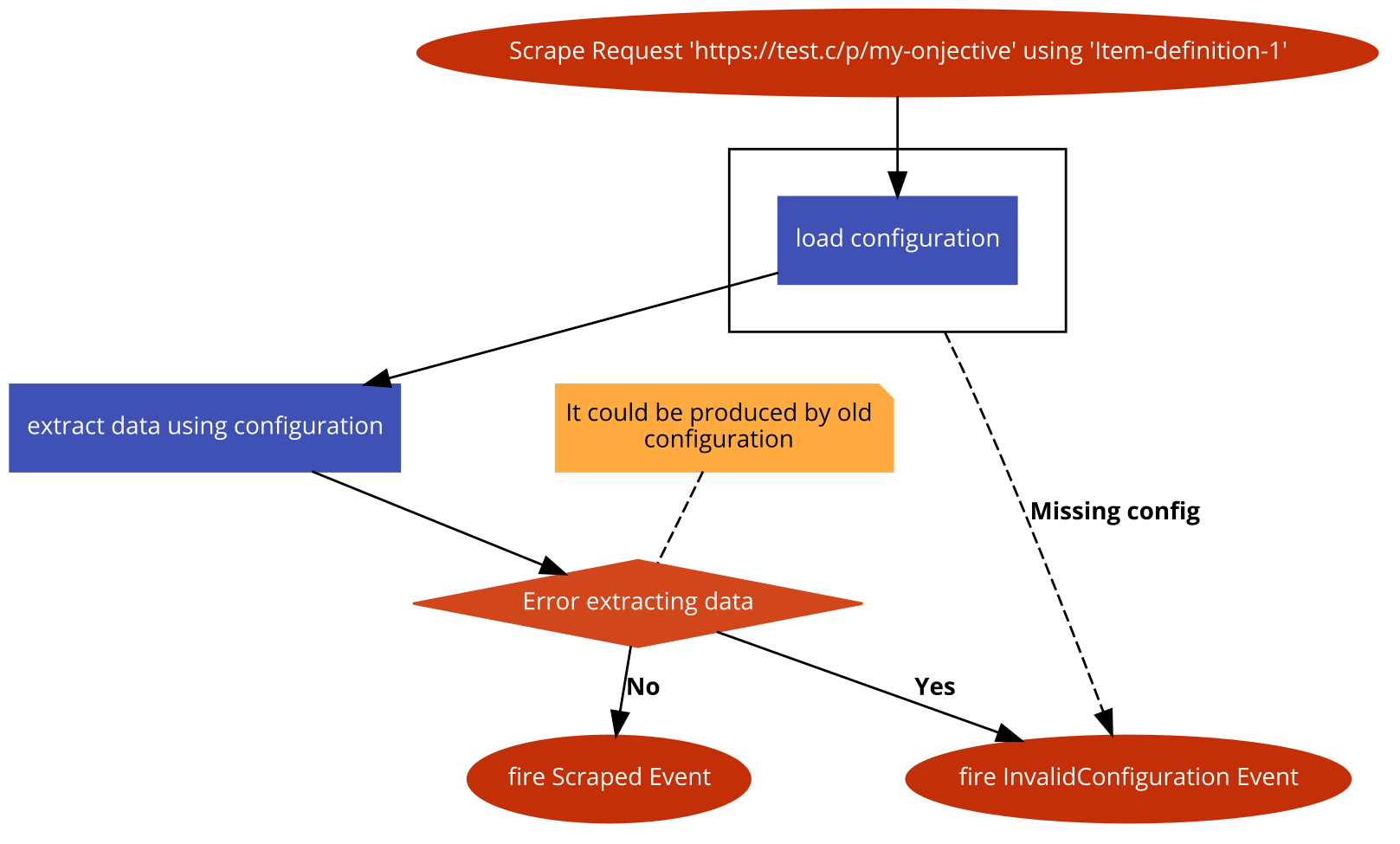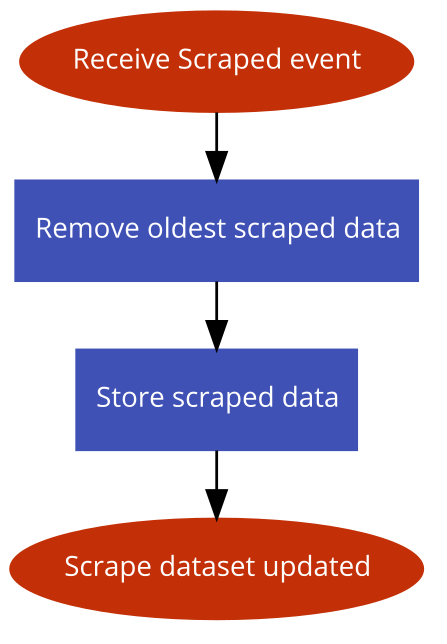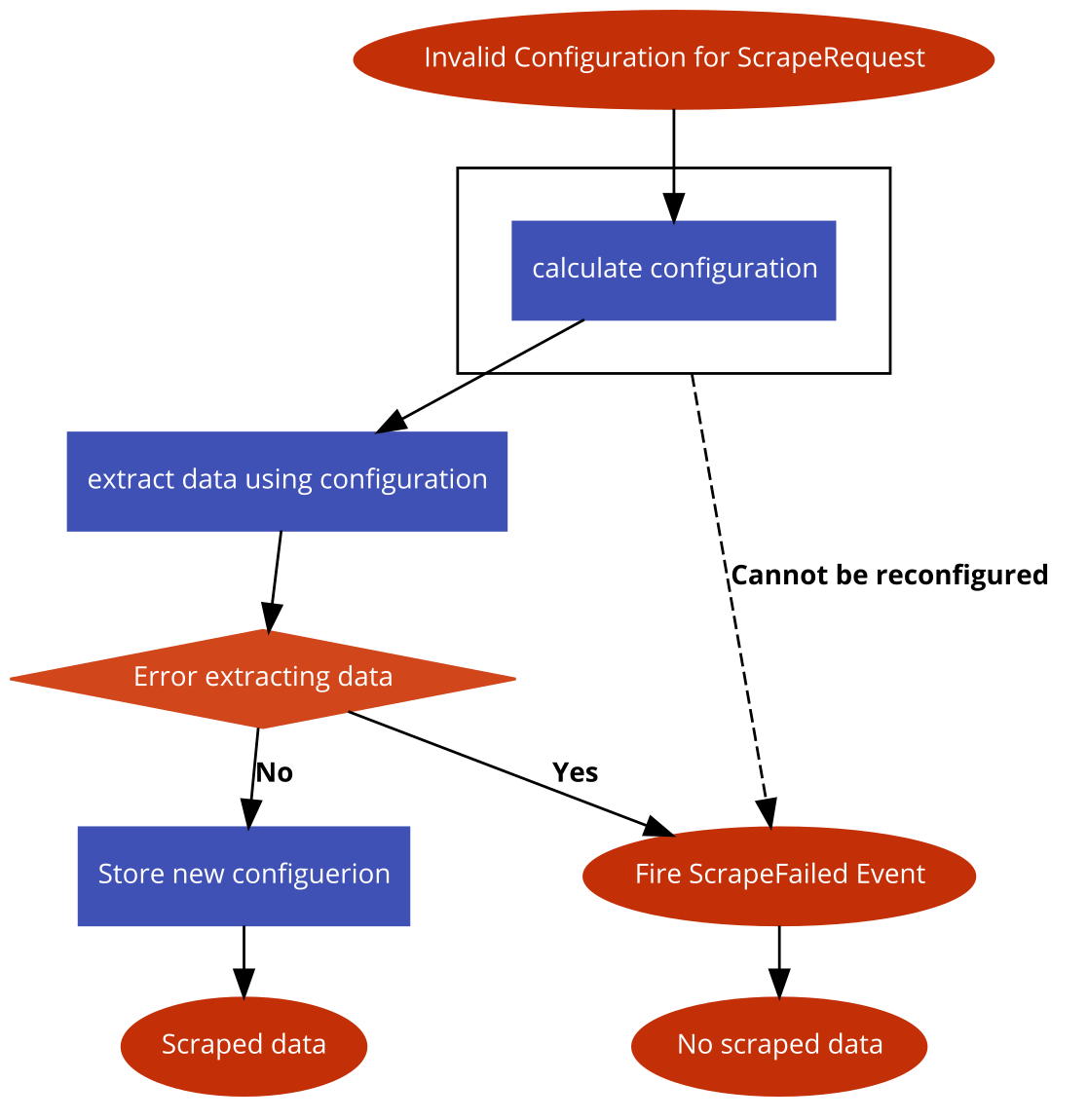joskfg / laravel-intelligent-scraper
Service to scrape a web page easily without knowing their HTML structure.
Installs: 257
Dependents: 0
Suggesters: 0
Security: 0
Stars: 12
Watchers: 1
Forks: 26
Open Issues: 0
pkg:composer/joskfg/laravel-intelligent-scraper
Requires
- php: >= 8.3
- ext-dom: *
- ext-json: *
- illuminate/database: ^10.0
- illuminate/events: ^10.0
- psr/log: ^1.0 || ^2.0 || ^3.0
- symfony/browser-kit: ^6.4
- symfony/http-client: ^7.1
Requires (Dev)
- friendsofphp/php-cs-fixer: ^3.8
- laravel/legacy-factories: ^1.1
- mockery/mockery: ^1.0
- orchestra/testbench: ^8.27.2
- phpunit/phpunit: ^9.0
- rector/rector: ^1.0
- squizlabs/php_codesniffer: ^3
This package is auto-updated.
Last update: 2025-12-22 19:11:30 UTC
README
This packages offers a scraping solution that doesn't require to know the web HTML structure and it is autoconfigured when some change is detected in the HTML structure. This allows you to continue scraping without manual intervention during a long time.
Installation
To install, use composer:
composer require joskfg/laravel-intelligent-scraper
To publish the scraper config, you can use
php artisan vendor:publish --provider="Joskfg\LaravelIntelligentScraper\ScraperProvider" --tag=config
The migrations for database are registered in the service provider, so you can execute the migrate command to create the needed tables.
php artisan migrate
Dependencies
This package depends on goutte that depends on guzzle, so you can customize the client to
your requisites. The only requirement for this package is that you must include the http_error midleware in the
handle stack.
Example:
<?php use GuzzleHttp\Handler\CurlHandler; use GuzzleHttp\HandlerStack; use GuzzleHttp\Middleware; use Goutte\Client as GoutteClient; use App\MyMiddleware; $client = new GoutteClient(); $stack = new HandlerStack(); $stack->setHandler(new CurlHandler()); $stack->push(MyMiddleware::getHandler(), 'my_middleware'); // Your custom middleware $stack->push(Middleware::httpErrors(), 'http_errors'); // Required middleware for the package $guzzleClient = new GuzzleClient(['handler' => $stack]); $client->setClient($guzzleClient);
The default stack already has the http_errors middleware, so you only need to do this if you are not using the default stack.
Configuration
There are two different options for the initial setup. The package can be configured using datasets or configured using Xpath. Both ways produce the same result but depending on your Xpath knowledge you could prefer one or other. We recommend using the configured using Xpath approach.
Configuration based in dataset
The first step is to know which data do you want to obtain from a page, so you must go to the page and choose all the texts, images, metas, etc... that do you want to scrap and label them, so you can tell the scraper what do you want.
An example from microsoft store could be:
<?php use Joskfg\LaravelIntelligentScraper\Scraper\Models\ScrapedDataset; ScrapedDataset::create([ 'url' => 'https://test.c/p/my-objective', 'type' => 'Item-definition-1', 'data' => [ [ 'key' => 'title', 'value' => 'My title', ], [ 'key' => 'body', 'value' => 'This is the body content I want to get', ], [ 'key' => 'images', 'value' => [ 'https://test.c/images/1.jpg', 'https://test.c/images/2.jpg', 'https://test.c/images/3.jpg', ], ], ], ]);
In this example we can see that we want different fields that we labeled arbitrarily. Some of theme have multiple values, so we can scrap lists of items from pages.
With this single dataset we will be able to train our scraper and be able to scrap any page with the same structure. Due to the pages usually have different structures depending on different variables, you should add different datasets trying to cover maximum page variations possible. The scraper WILL NOT BE ABLE to scrap page variations not incorporated in the dataset.
Once we did the job, all is ready to work. You should not care about updates always you have enough data in the dataset to cover all the new modifications on the page, so the scraper will recalculate the modifications on the fly. You can check how it works to know much about the internals.
We will check more deeply how we can create a new dataset and what options are available in the next section.
Dataset creation
The dataset is composed by url and data.
- The
urlpart is simple, you just need to indicate the url from where you obtained the data. - The
typepart gives a item name to the current dataset. This allows you to define multiple types. - The
variantidentifies the page variant. The identifier is a sha1 hash build based in the xpath used to get the data. - The
datapart is where you indicate what data and assign the label that you want to get. The data could be a list of items or a single item.
A basic example could be:
<?php use Joskfg\LaravelIntelligentScraper\Scraper\Models\ScrapedDataset; ScrapedDataset::create([ 'url' => 'https://test.c/p/my-objective', 'type' => 'Item-definition-1', 'variant' => '8ed10778a83f1266e7ffed90205f7fb61ddcdf78', 'data' => [ [ 'key' => 'title', 'value' => 'My title', ], [ 'key' => 'body', 'value' => 'This is the body content I want to get', ], [ 'key' => 'images', 'value' => [ 'https://test.c/images/1.jpg', 'https://test.c/images/2.jpg', 'https://test.c/images/3.jpg', ], ], ], ]);
In this dataset we want that the text My title to be labeled as title, and we also have a list of images that we want
to be labeled as images. With this we have the flexibility to pick items one by one or in lists.
Sometimes we want to label some text that it is not clean in the HTML because it could include invisible characters like
\r\n. To avoid dealing with that, the dataset allows you to add regular expressions.
Example with body field as regexp:
<?php use Joskfg\LaravelIntelligentScraper\Scraper\Models\ScrapedDataset; ScrapedDataset::create([ 'url' => 'https://test.c/p/my-objective', 'type' => 'Item-definition-1', 'variant' => '8ed10778a83f1266e7ffed90205f7fb61ddcdf78', 'data' => [ [ 'key' => 'title', 'value' => 'My title', ], [ 'key' => 'body', 'value' => regexp('/^Body starts here, but it is so long that.*$/si'), ], [ 'key' => 'images', 'value' => [ 'https://test.c/images/1.jpg', 'https://test.c/images/2.jpg', 'https://test.c/images/3.jpg', ], ], ], ]);
With this change we will ensure that we detect the body even if it has hidden characters.
IMPORTANT The scraper tries to find the text in all the tags including children, so if you define a regular
expression without limit, like for example /.*Body starts.*/ you will find the text in <html> element due to that
text is inside some child element of <html>. So define regexp carefully.
Configuration based in Xpath
After you collected all the Xpath from the HTML, you just need to create the configuration models. They look like:
<?php use Joskfg\LaravelIntelligentScraper\Scraper\Models\Configuration; Configuration::create([ 'name' => 'title', 'type' => 'Item-definition-1', 'xpaths' => '//*[@id=title]', 'optional' => false, 'default' => [], ]); Configuration::create([ 'name' => 'category', 'type' => 'Item-definition-1', 'xpaths' => ['//*[@id=cat]', '//*[@id=long-cat]'], 'optional' => true, 'default' => [], ]);
In the definition, you should give a name to the field to be scraped and identify it as a type. The xpaths field could contain a string, or an array of strings. This is because the HTML can contain different variations depending on the specific page, you can write a list of Xpath that will be checked in order giving the first result found.
The Configuration allows you to set fields as optional and set a default value when the xpath is not found. These fields are not going to trigger the reconfiguration process.
Usage
After configure the scraper, you will be able to request a specific scrape using the scrape helper
<?php scrape('https://test.c/p/my-objective', 'Item-definition-1');
There is an optional parameter called context that allows you to set a context to the scrapeRequest, so you will
be able to access that context in your listener. This is useful if you need some additional data (out of the scraped
data) to work in your listener.
<?php scrape('https://test.c/p/my-objective', 'Item-definition-1', ['id' => 'my-objective']);
The scrape will produce a Scraped event if all worked as expected.
So attach a listener to that event to receive the data.
/** @var \Joskfg\LaravelIntelligentScraper\Scraper\Events\Scraped $event */ $event->scrapeRequest->url; // Url scraped $event->scrapeRequest->type; // Request type $event->scrapeRequest->context; // Context $event->scrapedData; // Entity that contains all data scraped and the determined page variant.
All the output fields are arrays that can contain one or more results.
If the scrape fails a ScrapeFailed event is fired with the
scrape request information.
/** @var \Joskfg\LaravelIntelligentScraper\Scraper\Events\ScrapeFailed $event */ $event->scrapeRequest->url; // Url scraped $event->scrapeRequest->type; // Request type $event->scrapeRequest->context; // Context
To attach the listener, you can use the Laravel listener configuration like:
// providers/EventServiceProvider protected $listen = [ Scraped::class => [ MyListener::class, ], ScrapeFailed::class => [ MyListenerFirFailedScrapes::class, ], ];
But the scrapes from all types will go to that listeners. To simplify the listeners and just listen scrapes from a
single type, there is a listeners configuration available at scraper.php, so you can configure the listeners
with greater granularity.
return [ // config/scrapper.php 'listeners' => [ 'scraped' => [ 'my-type-1' => ListenerForTypeOne::class, 'my-type-2' => ListenerForTypeTwo::class, ], 'scrape-failed' => [ 'my-type-1' => ListenerFailedForTypeOne::class, ], ] ];
Advanced usage
There is another event named ConfigurationScraped that is triggered when a scrape is done automatically in the
reconfiguration step. It is exactly the same than Scraped event. It is named differently because usually it is not
interesting to use it apart from internally to update the dataset.
ConfigurationScraped can be used to do updates or to know internals about the configuration process.
Queue workers
You need to workers, one for the default queue and another for the configure queue. The configure worker
should be a single worker to avoid parallel configurations.
php artisan queue:work # As many as you want php artisan queue:work --queue=configure # Just one
Testing
joskfg/laravel-intelligent-scraper has a PHPUnit test suite and a coding style compliance test suite using PHP CS Fixer.
To run the tests, run the following command from the project folder.
$ make tests
To open a terminal in the dev environment:
$ make debug
How it works?
The scraper is auto configurable, but needs an initial dataset or add a configuration. The dataset tells the configurator which data do you want and how to label it.
There are three services that have unique responsibilities and are connected using the event system.
Scrape
It is fired when the system receive a \Joskfg\LaravelIntelligentScraper\Scraper\Events\ScrapeRequest event. It
can be done using our scrape($url, $type) helper function.
# Powered by https://code2flow.com/app
Scrape Request 'https://test.c/p/my-onjective' using 'Item-definition-1';
try {
load configuration;
}
catch(Missing config) {
goto fail;
}
extract data using configuration;
// It could be produced by old configuration
if(Error extracting data) {
goto fail
}
fire Scraped Event;
return;
fail:
fire InvalidConfiguration Event;
Update dataset
To be reconfigurable and conserve the dataset freshness the scraper store the latest data scraped automatically.
# Powered by https://code2flow.com/app
Receive Scraped event;
Remove oldest scraped data;
Store scraped data;
Scrape dataset updated;
Configure Scraper
If a InvalidConfiguration event is fired, the system tries to calculate a new configuration to get the information from ScrapeRequest.
# Powered by https://code2flow.com/app
Invalid Configuration for ScrapeRequest;
try {
calculate configuration;
}
catch(Cannot be reconfigured) {
goto fail;
}
extract data using configuration;
if(Error extracting data) {
goto fail;
}
Store new configuerion;
Scraped data;
return;
fail:
Fire ScrapeFailed Event;
No scraped data;
This process could produce two different events:
- Scraped: All worked as expected, and the page was scraped
- ScrapeFailed: The scrape couldn't be done after recalculate config, so we need a manual configuration action to fix it.
License
The Apache 2.0 license. Please see LICENSE for more information.



